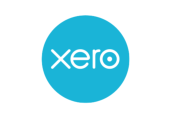We all know we need to be effective, and we need to be efficient in business, but what is really the difference, and how do you go about creating a high performing business? Josh was joined by Mark Pope from Pragmatico to talk about how to unlock high performance business strategies.
Mark Pope is a seasoned entrepreneur who, after a brief retirement, realised that his true passion lies in helping other businesses thrive. With a wealth of experience in building profitable and efficient businesses, Mark knows what it takes to succeed: a clear plan, high-performance expectations, and ongoing conversations about progress and targets.
The Difference Between Efficiency and Effectiveness
Efficiency is about streamlining processes and achieving results with minimal effort, while effectiveness focuses on the outcome and the overall business goals. In other words, businesses need to be efficient in their operations and effective in their strategic planning to succeed. This concept is illustrated by the saying “is the squeeze worth the juice?”—highlighting the need to evaluate if the effort put into a task is worth the results it generates.
Management Effectiveness vs. Process Efficiency
Everything, including leadership and management, is a process. One of my favourite people is John Wooden, who not a lot of people in Australia have heard of. He’s probably the best sporting coach that ever lived. He was head basketball coach for UCLA for many, many years, and he had this amazing record of having just over an 80% win rate.
The interesting thing about him was that he never focused on winning, he always focused on process. And if the players won the game but didn’t follow their process and structures, he wasn’t happy and he would challenge them about that. If they lost the game, but everyone stuck to their role and focused on their process. He was happy. That was all he ever asked of them. And as a result, he had this amazing win record. He was also very focused on culture and values and the attitude of the players.
I believe there are three main responsibilities of a leader, known as PTA:
- Plan: Define the direction of the business.
- Targets: Set specific goals to track progress.
- Accountability: Ensure team members are working towards the set targets.
Leadership effectiveness is achieved when PTA is working well within a business. To be efficient, the team should focus on the simplest and most direct way to achieve their goals.
Building Leadership and Communication
Communication is so important in fostering leadership effectiveness. Leaders should have a daily check-in with their team to align everyone’s goals and maintain regular communication. Additionally, holding one-on-one meetings and weekly leadership meetings helps address any problems and track performance against the set targets.
By focusing on both leading indicators (daily or weekly goals) and lagging indicators (monthly or quarterly targets), businesses can ensure they are on track to achieve their objectives.
Remember the importance of balancing effectiveness and efficiency in business processes, management, and leadership. With the right strategies and communication, businesses can unlock their true potential and achieve high performance.
Ensuring the Right Processes and Creating Ownership
If a process is not delivering the desired results, problem-solving should be initiated to identify the issues and adjust the process accordingly. The best processes are designed collaboratively by the people involved in carrying them out. To create a culture where team members feel comfortable taking ownership of the process, engaging with them from the start and give them the opportunity to contribute ideas and improvements. This collaborative approach not only leads to better processes but also fosters a positive work culture.
Assessing and Improving Company Culture
How do you evaluate and improve company culture? It is challenging to assess a business’s health from the outside or by looking at its financial statements. Leading indicators of a healthy culture include having a clear business plan and communicating it regularly to the team, ensuring employees understand their role in the company’s growth, and promoting a sense of purpose. You need to set behavioral expectations, managing and addressing any issues, and holding team members accountable for both their performance and behavior. By focusing on these factors, businesses can cultivate a positive culture that contributes to their overall success.
Adapting to Remote Work and Balancing Personal Connections
Fewer face-to-face interactions can negatively impact company culture. Incorporating personal anecdotes or “check-ins” at the beginning of virtual meetings helps create a more personal connection.
Balancing Closeness with Staff and Maintaining a Good Culture
Can being too close to staff members can be detrimental to company culture? Mark explains that while it’s important to have strong connections with employees, if personal relationships become too close, it can be difficult to have the necessary difficult conversations. Striking a balance between personal connections and professional boundaries is important for maintaining a healthy company culture.
The Importance of Business Health and the Role of Accountability
It’s important to focus on the non-financial drivers of a business to ensure its overall health, drawing a parallel to individual health. It’s essential for businesses to regularly evaluate themselves in various areas, including leadership, customer engagement, strategic metrics, culture, and accountability, among others.
I think there are three main areas where businesses can improve: leadership, having a plan, and accountability. There is a need for clear responsibilities and communication within a business, as these simple steps can help keep the business on the right track. Implementing these changes takes time, which roughly will be a 12-to-18-month process to see significant improvement.
Josh references the book “Good to Great” by Jim Collins, which emphasises the importance of having the right people on board and in the right roles within a business. Both Josh and Mark agree that having the right team is crucial for a company’s success.
In summary, focusing on the overall health of a business and implementing changes to improve leadership, planning, and accountability can lead to a more successful and sustainable organisation. It is an ongoing process that requires regular evaluation and adaptation, as well as having the right team in place to support the company’s growth and development.
Recommended Book for Business Improvement and Defining Business Freedom
“The Advantage” by Patrick Lencioni is one of my favourite books. It highlights the difference between a smart business and a healthy business, emphasising the importance of communication, transparency, and accountability. Healthy businesses tend to outperform smart businesses, aligning well with the concepts discussed in “Good to Great” by Jim Collins.
For me, business-built freedom is to make a difference and have an impact on others. I enjoys challenging people’s perspectives and helping them think differently about their businesses and lives. Mark emphasises the importance of leading people with empathy and showing them a better way without pushing them.
Mark can help you get the right answers to building your business through Pragmatico’s structured system for building a successful organisation. Contact him today to learn more.





























